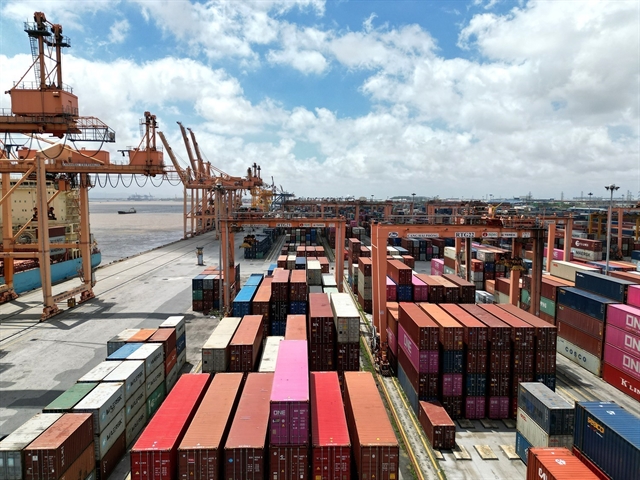 Economy
Economy

Việt Nam is one of the world's fastest growing e-commerce countries, Lại Việt Anh, deputy director of Việt Nam E-commerce and Information Technology Agency (Vecita) under the Ministry of Industry and Trade, said.
 |
| A person hunts for sales online during Black Friday. - VNS Photo Đoàn Tùng |
HÀ NỘI — Việt Nam is one of the world’s fastest growing e-commerce countries, Lại Việt Anh, deputy director of Việt Nam E-commerce and Information Technology Agency (Vecita) under the Ministry of Industry and Trade, said.
“The country’s e-commerce market is growing 35 per cent per year, 2.5 times faster than Japan,” Anh said.
Vietnamese businesses capable of taking advantage of the internet and technology grow 2.1 times faster than others. Small and medium enterprises (SMEs) that spend more than 30 per cent of their budget on technological innovation grow nine times faster than those spending less than 10 per cent.
Anh told the Việt Nam Business Forum 2017, themed “E-commerce Solutions for the Success of Businesses,” held in Hà Nội this week that Việt Nam’s e-commerce retail sales growth in 2016-20 is estimated at 20 per cent per year and the country’s total retail e-commerce sales would reach US$10 billion by 2020.
In 2017, e-commerce retail sales have expanded by 25 per cent and will become an important part of Việt Nam’s e-commerce sector. E-commerce is widely considered the buying and selling of products over the internet. E-commerce is subdivided into three categories: business to business (B2B), business to consumer (B2C) and consumer to consumer (C2C) also called electronic commerce.
“E-commerce is expected to become an important infrastructure of Việt Nam’s trade sector,” she added.
However, e-commerce has seen some barriers that deter its sustainable development, including low consumer trust in products and services and concerns over online payment security.
In addition, most Vietnamese e-commerce websites provide only basic services, such as information about products and modes of payment. Services such as digital marketing optimisation and connecting online with offline sales need to be added.
Anh said retailers should not only create and operate websites, but also have an overall business trading system – from production, marketing and order management to transport and delivery services – to successfully participate in the e-commerce sector.
Lê Hải Bình, vice chairman of Việt Nam E-commerce Association (VECOM) said the country’s IT infrastructure was favourable for e-commerce development.
Nguyễn Quỳnh Nga, deputy director of the SME Department under Orient Commercial Joint Stock Bank (OCB), said one of the main barriers for SMEs was guaranteed assets. In addition, unclear financial reports and unsuitable business plans also made connections between banks and SMEs become more difficult in developing e-commerce.
Nga said the participation of SMEs in the global supply chain was limited as the added value was low despite high export turnover. This was the reason that banks needed to have special products and services in the long-term period to support SMEs.
“SMEs have been a potential market segment, thus requiring banks to have special access,” she added.
Đỗ Phi Long, director of a company specialising in consumer goods trading and distribution was quoted by online newspaper dantri.com.vn as saying that trading through e-commerce channels was not less expensive compared with the traditional ways of selling goods.
Long said his company posted products on e-commerce websites. This way of selling had advantages of reducing management and human resources costs, even as information on products was readily available to customers.
However, there were shortcomings, such as high costs paid to e-commerce websites and risks of cancelled orders by customers, he said, adding that there was no penalty mechanism for people canceling orders.
He said e-commerce had brought a new selling channel for businesses, parallel with the traditional ways and removed intermediaries. Growth in sales was seen, however it wasn’t strong.
The director added that most people shopping online were young and with white-collar jobs. It was hard to encourage the middle-aged to shop online although they had a high income.
He suggested that the Government enhance its management role by tightening goods information provided by retailers. He added there was a lack of accurate information when shopping online, especially on Facebook.
It was this chaotic dissemination of information that led to a lack of trust among consumers’ when shopping online, preventing e-commerce development. — VNS









